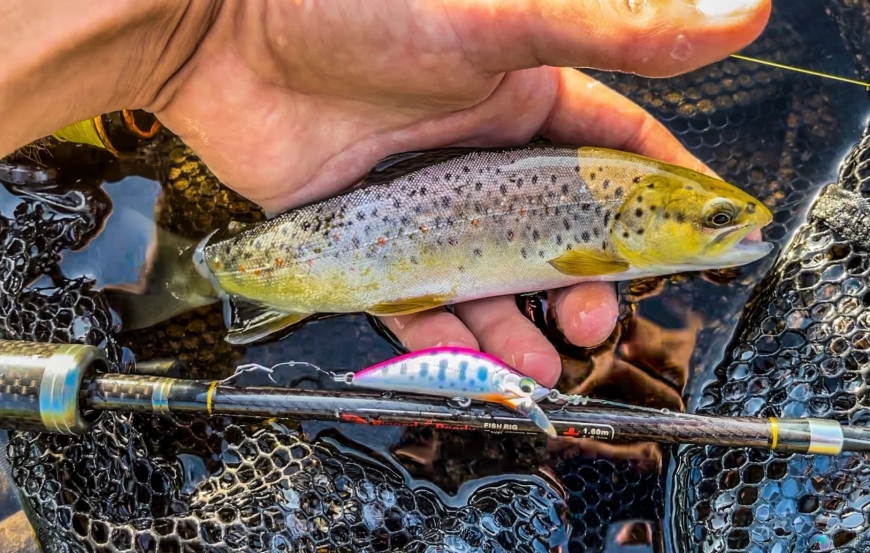Fishing Rod and Fishing Line Combinations for Every Angling Adventure
Discover the perfect fishing rod and fishing line combinations for every angling adventure. Elevate your fishing game with expert pairing tips and strategies.

Fishing is an exhilarating pursuit that combines skill, patience, and the right tools to succeed. Whether you're a seasoned angler or a beginner, understanding how to pair your fishing rods with the appropriate fishing line is vital for maximizing performance and enjoyment. The proper combination can enhance casting distance, sensitivity, and strength, allowing you to tackle various fishing environments with confidence.
Why Pairing Matters
The synergy between a fishing rod and a fishing line determines how well they work together to deliver results. An ill-suited combination can lead to poor casting, missed bites, or even damage to your gear. Matching the rod’s power, action, and material with the line's strength and type ensures that your setup complements your fishing technique and target species.
Understanding Fishing Rods
A fishing rod is a versatile tool with unique features that dictate its performance:
-
Rod Power
-
Light: Ideal for small fish, paired with lightweight lines.
-
Medium: Offers versatility for a range of species and techniques.
-
Heavy: Designed for large fish and heavy lines in tough conditions.
-
Rod Action
-
Fast Action: Bends near the tip, providing sensitivity and quick hook sets.
-
Moderate Action: Bends in the middle, suitable for diverse applications.
-
Slow Action: Bends throughout, great for lightweight lines and smaller fish.
-
Material
-
Graphite: Lightweight and sensitive, suitable for finesse techniques.
-
Fiberglass: Durable and flexible, ideal for heavy-duty fishing.
-
Composite: Combines both materials for balance and versatility.
Exploring Fishing Lines
There are three main types of fishing lines, each designed for specific purposes:
-
Monofilament Line
-
Stretchy and easy to use, making it ideal for beginners.
-
Best for medium-power rods and freshwater species.
-
Braided Line
-
Extremely strong with zero stretch, perfect for heavy cover and big fish.
-
Works well with heavy-power rods and saltwater fishing.
-
Fluorocarbon Line
-
Nearly invisible underwater, offering a stealth advantage.
-
Pairs best with medium or fast-action rods for clear water conditions.
Also Read: Mastering the Art of Fly Fishing with the Perfect Fishing Pole
Perfect Fishing Rod and Line Combinations
1. Light Rod with Monofilament Line
-
Best for: Panfish, trout, and small freshwater species.
-
This combination provides excellent sensitivity and flexibility for finesse fishing.
2. Medium Rod with Fluorocarbon Line
-
Best for: Bass, walleye, and versatile fishing styles.
-
Fluorocarbon enhances the rod's sensitivity, making it easier to detect subtle bites.
3. Heavy Rod with Braided Line
-
Best for: Large game fish like pike, catfish, or saltwater species.
-
The strength of braided lines complements the durability of heavy rods, perfect for battling tough fish.
4. Fly Rod with Specialty Fly Lines
-
Best for: Fly fishing enthusiasts targeting trout or salmon.
-
Ensure the fly line weight matches the rod for optimal casting performance.
Matching Combinations to Environments
-
Freshwater Lakes and Rivers
-
Medium rods paired with monofilament or fluorocarbon lines are ideal for diverse fish species and techniques.
-
Saltwater Fishing
-
Heavy rods with braided lines withstand the harsh saltwater environment and the strength of large species like tuna.
-
Dense Cover or Vegetation
-
Braided lines with medium to heavy rods cut through weeds and provide the strength needed to reel in fish.
Tips for Choosing the Right Combination
-
Target Species: Match the line strength to the fish size. For example, bass fishing typically requires 8-12 lb test lines.
-
Fishing Techniques: Jigging or finesse fishing may need lighter rods and lines, while trolling calls for sturdier setups.
-
Environmental Factors: Use fluorocarbon in clear water for stealth, and braided lines for murky or dense environments.
Maintaining Your Setup
To extend the lifespan of your fishing rods and fishing lines, follow these tips:
-
Rinse your gear with freshwater after each saltwater trip to prevent corrosion.
-
Inspect lines for nicks or abrasions before each outing.
-
Store rods in protective cases to prevent bending or damage.
Common Mistakes to Avoid
-
Using a Line That’s Too Heavy for the Rod
Overloading your rod with an excessively strong line can lead to breakage or reduced casting efficiency. -
Ignoring Rod Manufacturer Recommendations
Each rod specifies a line weight range. Sticking to these guidelines ensures optimal performance. -
Neglecting to Match Reels with Rods and Lines
Your reel also plays a crucial role in the setup. Ensure it complements your rod and line for a seamless fishing experience.
Conclusion
Pairing fishing rods with the right fishing lines is an essential skill for any angler. Whether you’re fishing in tranquil lakes or challenging saltwater environments, the perfect combination can elevate your experience and success rate. By understanding the unique attributes of rods and lines, and how they work together, you can confidently tackle every angling adventure with the right tools in hand.
What's Your Reaction?
















